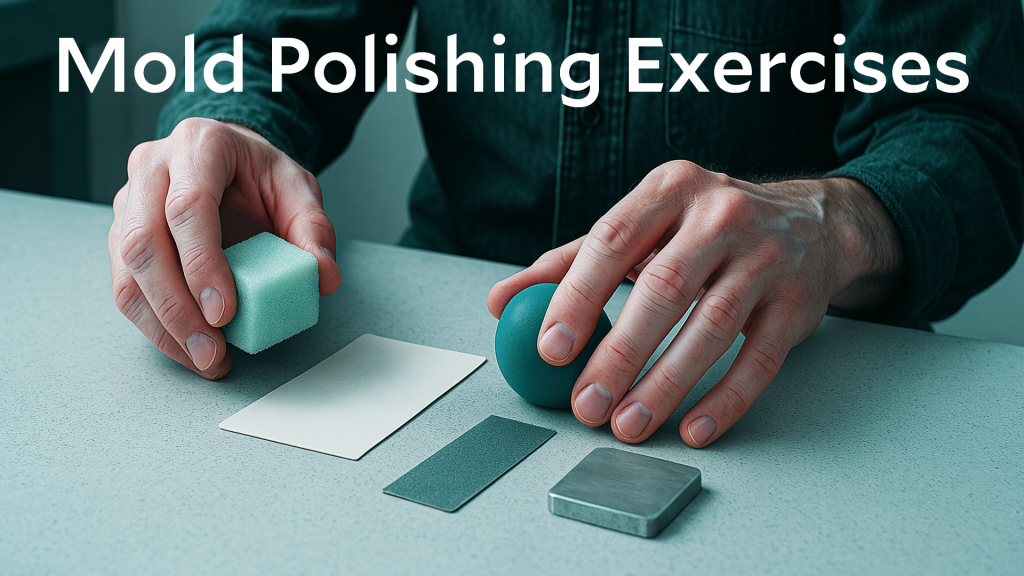
Mold polishing is a very precise task requiring micron-level control. Fine motor skills and fingertip sensitivity greatly affects the productivity and quality of output of a mold polisher. The same is true of other professions such as musicians, artists, surgeons, physiotherapists, etc.
According to the author of “Japan Manufacturing Research: Introduction to Molds” [1], mold polishers find it hard to polish on Monday mornings. The reason being they have been away from work for two days on the weekend, after which they feel a loss of sensitivity in their fingertips.
Persons in any profession requiring precise finger movements are likely to feel the same loss of performance after a couple of days off. Monday morning is the time of reckoning for many such professionals, including mold polishers. The hard thing is it takes several hours for a mold polisher to regain the “correct” feeling in their fingertips.
Many workplaces requiring some sort of physical exertion start the day with some stretching exercises to warm the body up and prevent injury. A mold polisher may also benefit from a special routine on Monday mornings to help regain the sensitivity in their fingertips more rapidly.
There are many examples of tactile training exercises which could be incorporated into a training routine for mold polishers. For example, clay manipulation (using clay or wax to shape fine details using only the fingertips). Tactile memory drills (playing scales on a musical instrument without looking). Or you could try the following simple routine created by a member of XEBEC’s R&D Department with a passion for physical conditioning. It is designed to return you to your regular level of performance sooner.
Purpose: Improve the blood flow in your fingers and awaken the nerves in your fingertips.
Purpose: Recover your “delicate” touch.
Purpose: Develop the necessary finger grip for mold polishing.
The area of the brain that controls sensation in the fingertips is called the somatosensory cortex. Research has shown that regular tactile stimulation can increase activity in this area of the brain, speeding up sensory recovery [2][4]. It has also been proven that moving your hands improves blood flow and makes your fingertips more flexible [3]. Just as athletes warm up before training, it may be beneficial to incorporate a daily routine to maintain the “feeling” in your fingertips.
References
[1] Kohei Hori, “Japan Manufacturing Research: Introduction to Molds (ニッポンものづくり研究 「金型」入門)”, Gentosha, 2019, pp. 152-153
[2] Akari Hashimoto et al., “Seeing what you touch: Cross-modal plasticity after vision loss”, Department of Anatomy and Molecular Cell Biology, Nagoya University Graduate School of Medicine, 2023. https://www.med.nagoya-u.ac.jp/medical_E/research/pdf/Cel_230422en.pdf
[3] Tomoko Aoki, “Do complex finger movements really stimulate brain activity? (複雑な指運動は本当に脳の活動を促すのか?)” Descente Sports Science, 26 (2005), pp. 42-50
[4] Miki Taoka, “The role of the somatosensory cortex in understanding objects and one’s own body (対象物と自己身体の理解につながる体性感覚野の役割)”, Mind and Body Health Science, 16.1 (2020), pp. 23-28
XEBEC Technology develops, manufactures, and distributes tools for deburring and polishing metal parts. It conducts a mold polishing competition each year which attracts over 200 mold polishing professionals from all over Japan.